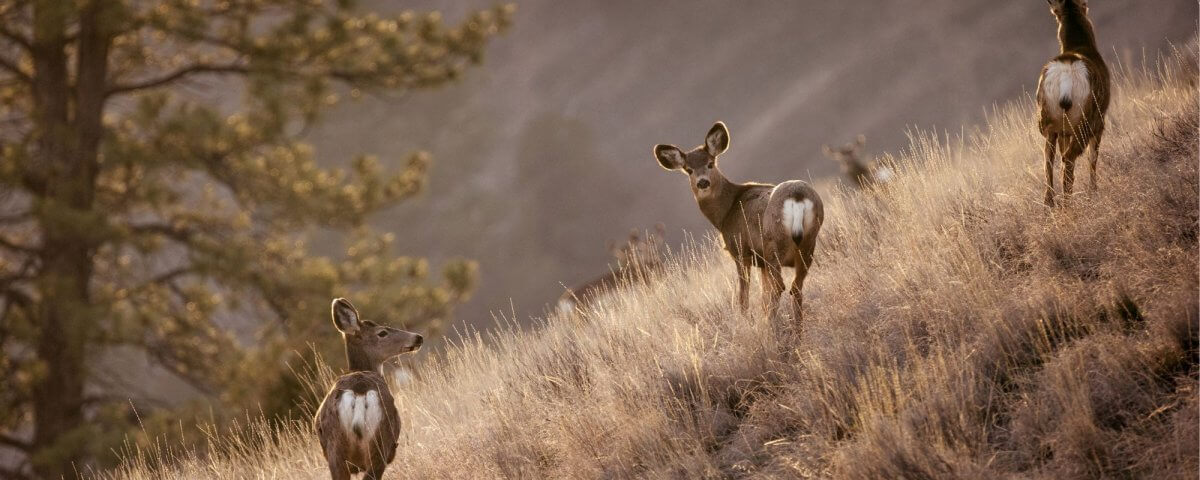Wildlife and Recreation Pressure: A Interview with WDFW

Become Involved in the ATV Public Process
July 25, 2022
An Ethic of Responsible Recreation
July 29, 2022An Interview with WDFW Staff about the Methow Wildlife Area Management Plan
The Washington Department of Fish and Wildlife (WDFW) is in the process of developing a new Management Plan for the Methow Wildlife Area. A focus of the management plan will be how to address increased recreation impacts while maintaining critical wildlife habitat. Some of you may have been able to attend the public meeting on June 27 where community members could learn about the Wildlife Area and raise questions and concerns. To provide more of our community with background for the Plan we reached out to some of the local WDFW staff including District Biologist Scott Fitkin, Operations Manager Justin Haug and Recreation Planner Heide Anderson with some questions about the Methow Wildlife Area.
After learning more about the plan we encourage you to give your input on this WDFW survey input on this survey, available through November.
MVCC: What types of wildlife does the Methow Wildlife Area provide habitat for? What are some of the biggest threats to these species and in what ways does the Wildlife Area provide key habitat?
WDFW: The wildlife area provides habitat for a tremendous range of species spread across many taxa including just about all vertebrate (and many invertebrate) wildlife species found in the Methow Watershed. The exception might be some of the species adapted to higher elevations such as wolverine, lynx, ptarmigan, boreal owls; however, even those may be expected to occasionally use a portion of the wildlife area during migratory or dispersal movements. The early origins of the wildlife area were rooted in mule deer winter range protection. Over time (particularly the last 30+ years with the establishment of RCO funding) the focus has become more holistic and has sought to protect low-elevation habitats such as shrubsteppe and riparian habitats that are critical to maintaining the valleys biodiversity but are underrepresented in the existing protected land base. Slowing fragmentation and fostering connectivity has been a companion goal (see below).
MVCC: How many mule deer use the Methow Wildlife Area? Are there population estimates for any other species?
WDFW: Accurate population counts are all but impossible to get for most species. A ballpark estimate for mule deer would be 8,000-12,000 in the Methow Watershed. Recent black bear monitoring results produced an average density estimate of about 21 bears (including cubs) per 100 sq kilometers of suitable habitat (most of the Methow).
MVCC: What kinds of recreation occur the most on Methow Wildlife Area lands?
WDFW: Non-motorized trail-based (and off-trail) recreation such as hiking, biking, skiing, horseback riding, and wildlife viewing are the dominant activities on a year-round basis. Hunting, fishing and shed hunting receive a lot of participation seasonally and camping and picnicking are also popular in specific locations. Some illegal motorized recreation (ATVs, dirt bikes, snowmobiles) is a chronic issue (legal motorized use is limited to designated county roads).
MVCC: How have you observed recreation pressures shifting in the Methow Wildlife Area over the last few years? Are there certain areas that are getting too much pressure?
WDFW: Non-motorized trail and off-trail recreation has increased substantially over the last 10 years or so and exponentially in the last few years. Shed hunting has also risen noticeably, while hunting and fishing have been relatively stable. The increased recreational pressure in some areas has affected wildlife presence, behavioral patterns, and habitat use. WDFW will begin measuring recreational impacts, monitoring those impacts, and using that data to inform management actions in the future.
MVCC: In updating the Methow Wildlife Area Management Plan, what are some strategies or changes in management that are being considered to balance the protection of fish and wildlife with increasing recreation pressure?
WDFW: Seasonal access closures, strategic trail placement/relocation, illegal trail decommission, changes in road access management, and more will all be considered.
MVCC: What input would you like to see from the local community to help planning team produce a management plan that responds to community values?
WDFW: The Wildlife Area Advisory Committee (WAAC), which MVCC is a part of, will act as a community conduit for input. The planning effort also incorporates public workshops, surveys, and other outreach to gather information. The draft plan can also be a time for the community to provide input as it will be sent out for review.
MVCC: How will the statewide WDFW Recreation Strategy be incorporated into the Methow Wildlife Area Management Plan?
WDFW: The Methow WLA management plan process will be a pilot project for implementation of the newly adopted WDFW 10-Year Recreation Strategy.
MVCC: How could the Management Plan shape river access along the Methow River?
WDFW: Public access to the Methow River could be identified during the planning process as an objective which would assist in the writing of grants to develop more or improve existing access points.
MVCC: The Methow Wildlife Area is not contiguous and has land holdings throughout the Valley. Is there an effort to connect Methow Wildlife Area lands? Are there key corridors?
WDFW: We always have and eye towards connecting our lands to improve connectivity and management efficiency. In addition, some of our properties were purchased in part to improve connectivity across a broader public land base including, federal lands, other state lands and conservation easements, and in some cases to maintain cross-valley undeveloped linkages to facilitate the movements of wide-ranging wildlife.


